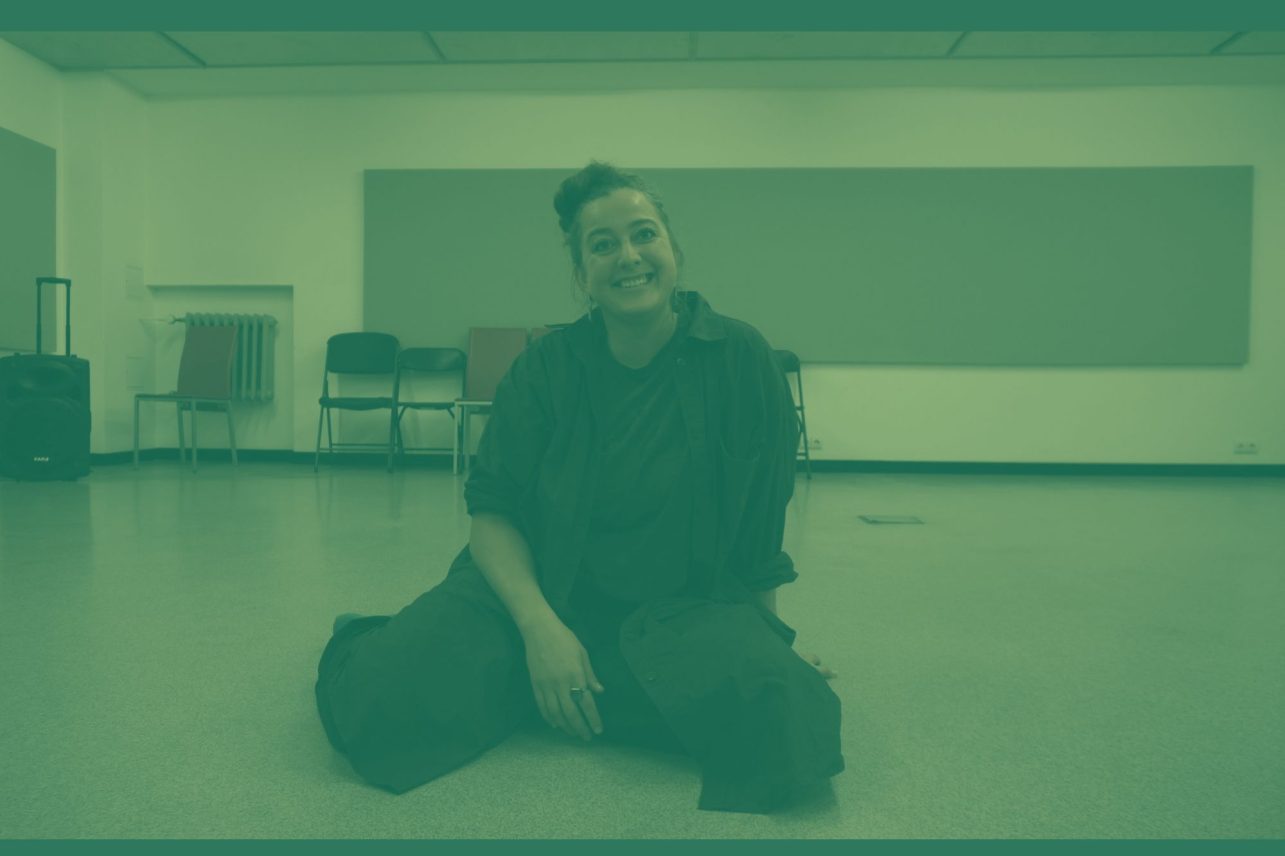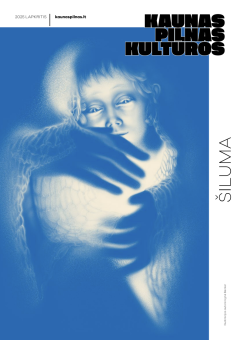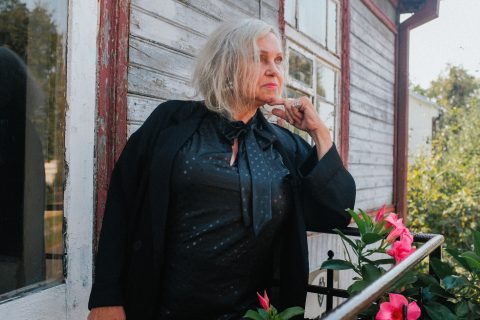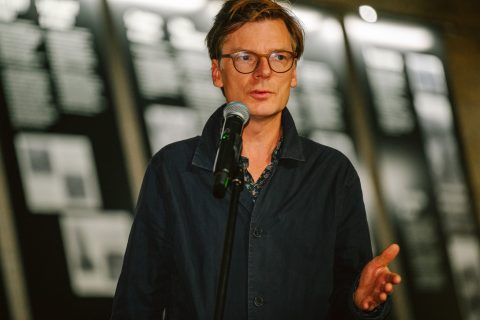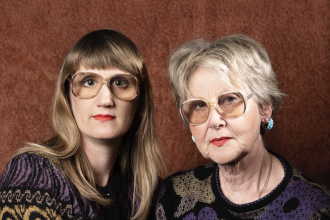This summer, Kaunas Artists’ House has a volunteer from Slovenia: Lucija Lunder. A recent graduate of the Faculty of Arts at the University of Ljubljana, Lucija has quickly become part of the vibrant and diverse KAH team. Visitors are already accustomed to being welcomed by young people from abroad, and Lucija is no exception – always eager to chat about art and culture, even if she doesn’t speak Lithuanian.
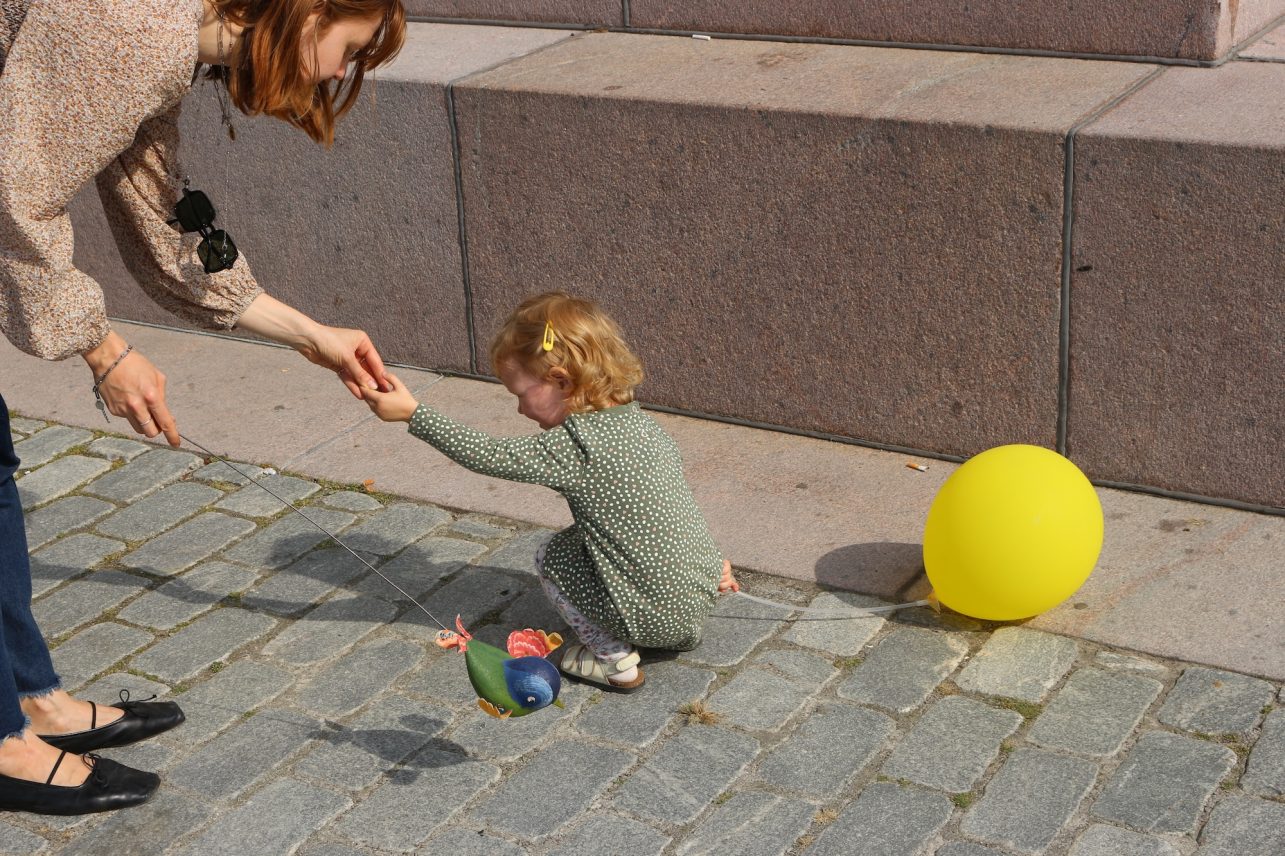
In late September, Lucija presented a video project exploring what it means to be both a mother and an artist in Lithuania. She interviewed several Lithuanian women artists, a project rooted in her own personal journey. Facing significant decisions about her future, Lucija found these conversations incredibly helpful in seeking answers. Some of their insights, which offer a surprising perspective on this magazine’s theme, are shared below. After so much focus on the children, it’s time to hear from the mothers themselves.
Emilija Rožukaitė, Pianist:
I’ve only been a mother for four and a half years, but I’ve been a pianist for many years, and I probably identify more as a pianist than a mother. Of course, motherhood has changed everything significantly. I find it difficult to develop my career because I’ve studied all over the world and haven’t been in one place long enough to build contacts and context for my career. I had planned to do that, but then I had my child, and it became impossible. Sometimes I find it very challenging because of the lack of time – needing to care for the baby (now I have two), and also needing to practise and maintain my skills. On top of that, I have to manage myself as a performing artist, so it’s very tricky and requires a lot of planning and dedication. And a lot of help, of course.
Life is generally quite difficult for mothers; you don’t have to be an artist to feel those pressures. There’s a lot of loneliness, a lot of work, and no time for oneself. Every mother understands what I’m talking about. However, perhaps for artists, and particularly instrumentalists, it’s crucial to maintain your skills because if you don’t practise the violin, piano, cello – whatever instrument – you lose that ability. I studied for many years, and then I thought all that work would be for naught because I had to stop practising due to the children. Of course, it returns slowly after some years, but if you don’t practise for two months, your fingers become very difficult to manage. You need to do at least a little bit every single day to keep them in shape.
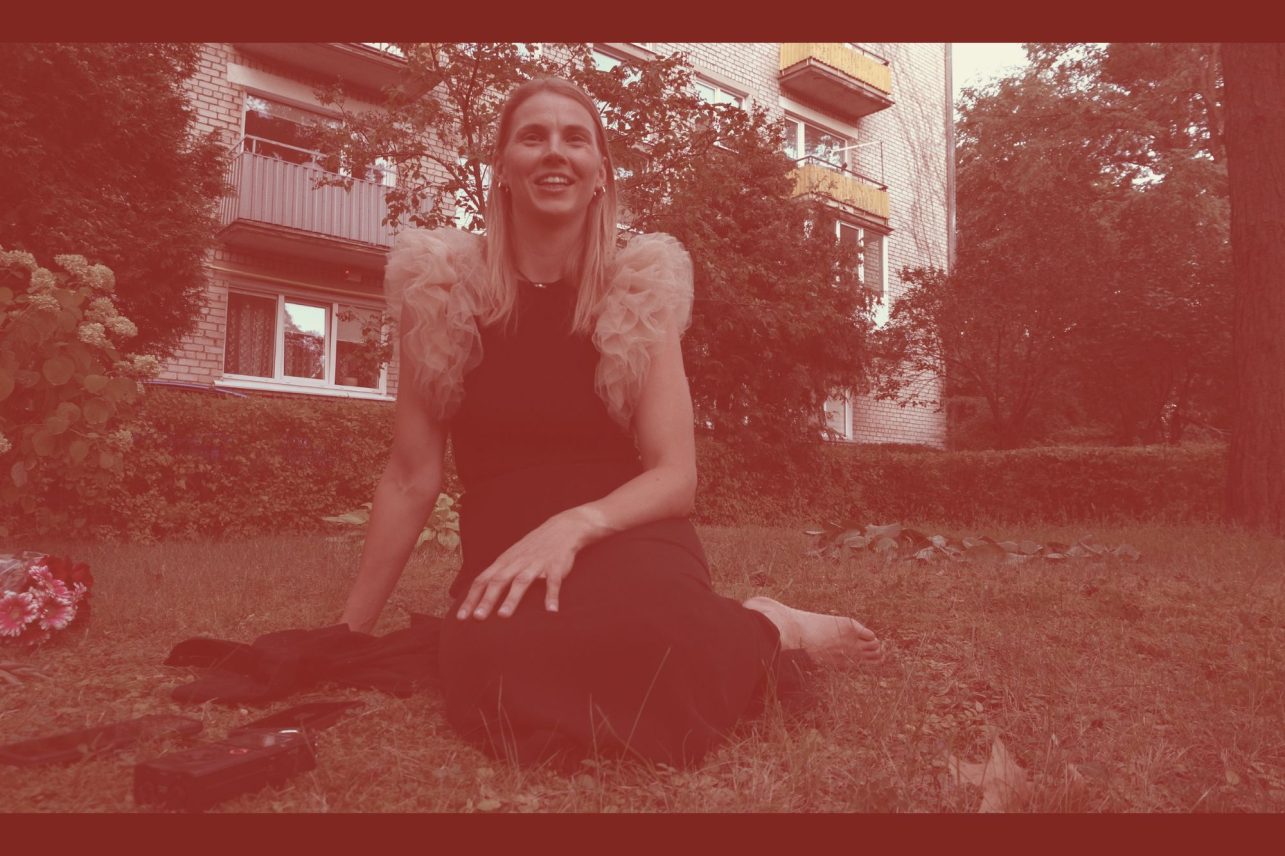
Vaida Tamoševičiūtė, Performance Artist:
How has becoming a mother influenced my work? Substantially, I would say. Starting with the themes I explore, which immediately became important to me, which I never thought they would. I never thought I would be making art about children, the mother-child dynamic, and so on. But I think this change is so immense in a woman’s mind and body that you simply can’t disregard it. I always work with my body and with my inner experiences – how to translate these inner experiences into an external visual form. Therefore, it was impossible for me to avoid the theme of motherhood, because my body and mind had undergone it so completely. Furthermore, this change seems to have had various phases, and it’s still changing over time. I feel as though I’m still becoming a mother, rather than being one already. I don’t know if that process ever feels finished, as the changes in child development, what you go through at different times, your relationship with your child, with yourself, with the outside world… one thing becomes easier, while another becomes more difficult.
I always considered what I could teach my daughter and what I would like her to learn. I had these ideas about what I wasn’t – that I would teach her to go camping in the forest and learn about animals and nature. But I don’t have that knowledge, and I couldn’t impart it. I think it’s unavoidable that we pass on what we are. It’s not that I necessarily want her to be an artist, or to not be one, but since she was a baby she’s been with me – crawling around students during lectures, and I carried her to events and exhibitions. When she was very little, I even took her to performance art festivals if the organisers permitted it. These things have always been around her, she’s been seeing them. Now she doesn’t see my performances as much – at one point, I tried to protect her because I couldn’t properly explain what I was doing and why. But now that she’s older, she’s becoming very curious. When I say I have to think about new performances, she says, ‘I can think for you.’ And she has endless suggestions. And I see that at her age, at seven, she already knows what it is. She already visually understands what performance art is, and what she suggests to me could potentially be a performance piece. So, she’s always been around it. And I don’t think it was intentionally done to impose something on her, but it’s simply who I am, what she sees around her, and what I talk to her about. Of course, she’ll pick up on that.
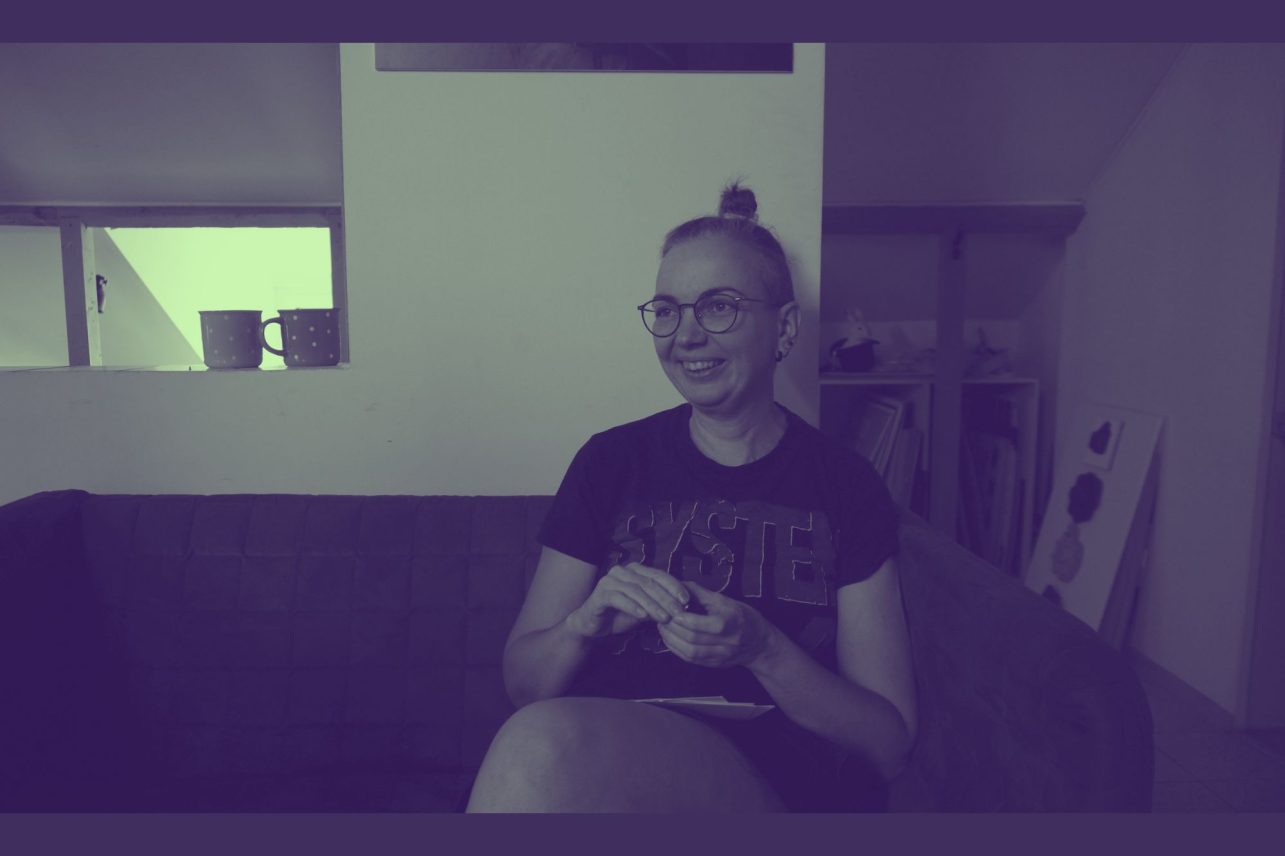
Liudvika Sonia Koort, Interdisciplinary Artist:
I truly appreciate being an artist and becoming a mother because it has taught me to understand and feel much more deeply. Which I think is very important for an artist – to feel and understand things profoundly, and to really have accountability for your work. Once you bring a child into the world, you understand that things genuinely shape people because you see that things really shape your child – what your child sees, hears, what she is taught. It shapes them. And you understand that this shaping – while very important in the beginning of a child’s life – continues. As adults, we are still being shaped every single day. And to have that accountability as an artist, to show something that would improve someone else, as a viewer, as someone who comes to the exhibition and looks at your work. To ensure that what you’re sharing has some value.
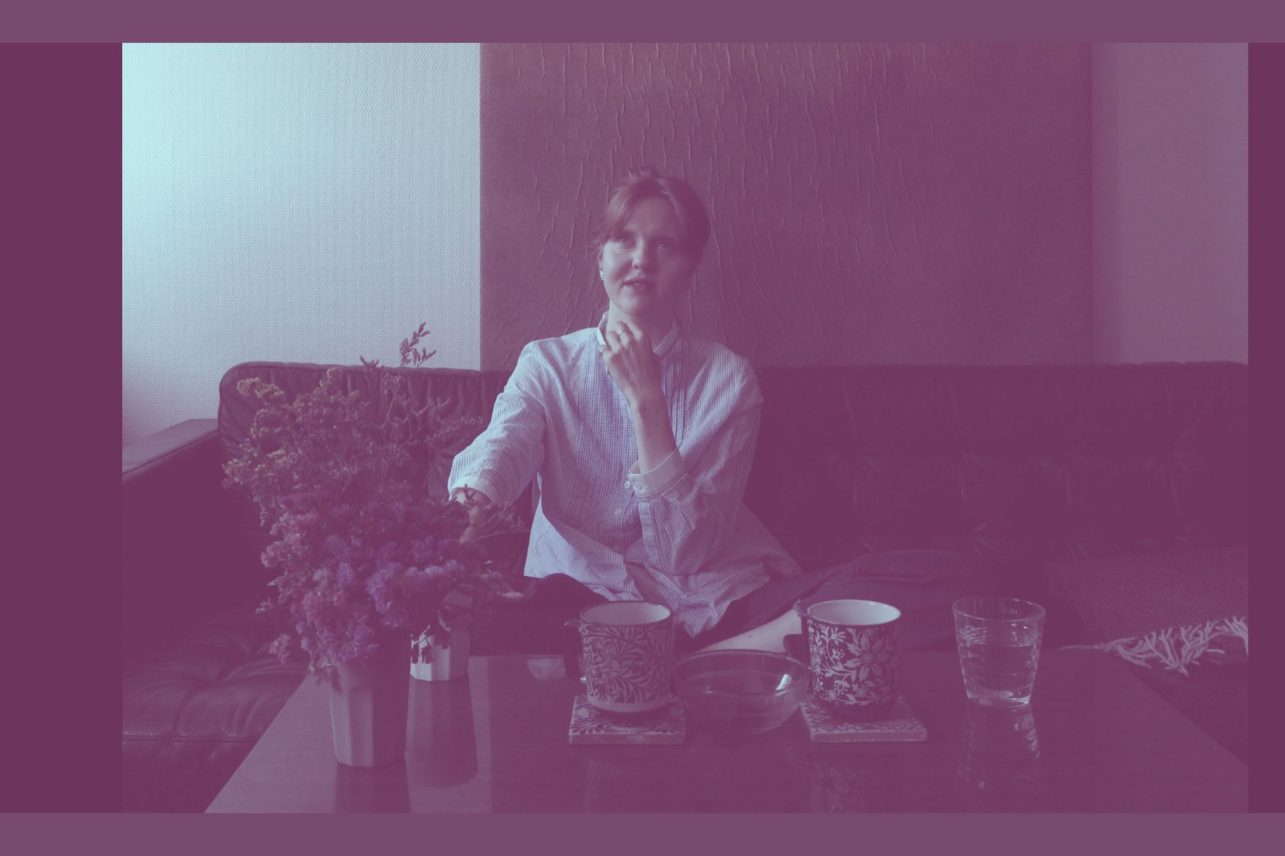
Indrė Puišytė-Šidlauskienė, Contemporary Dance Artist:
Before giving birth, I was more of a dancer – I danced for AURA. When I started to think about having a baby (I was 29, which is quite late for a dancer), I stopped dancing, and it changed my life. After my daughter, Agota, was born, I tried to combine her with my work, and I focused more on creating choreographies and teaching. All my life, I had been dancing, and after Agota, my body felt really stuck. Sometimes it was difficult for me to go to the theatre and see a dance performance because I felt like I wanted to be on stage and not just watching. But it took about two years, and after that, I found a way that I could be on the stage, but not like I was before, because my body had changed. I felt that my body couldn’t do everything that I did previously. You want to dance like you did before, but you can’t. Then you realise that you can achieve it with other bodies, so I created ULNA. It was my choice. At this moment, I’m really happy with that decision. Sometimes I also dance, but differently than I did before; mostly I create choreographies and teach. It was important for me to stay in the dance world.
My daughter also dances. Since she was small, I took her to theatres. I was creating theatre with dancers or with actors, and she was standing there, watching me all the time. I think it’s lovely for me. And I think later it will be nice for her too. Perhaps she will understand it even more when she is around 20 years old. When you live with parents who are in the art world, you can see everything from the inside. Now she’s a very creative girl. She paints and creates her own films or dance moves and everything. I think it’s because she was with me all the time when I was working. However, it’s hard when I have to combine my work, when I have to be here at the centre. Like today, she’s at home. I have to go to school to collect her, to cook, eat and go back. And all the time, you have the feeling that you need to be in different places at once. So it’s really hard. But I can’t not like this. Because I want to create, I want to be here, and I want to be more than just a mother. Ultimately, it was my conscious decision to become a mother.
I think that if you are, for example, a composer or something else, it’s a bit different than if you are a dancer, because if you are a composer, you can work at home, or you are not working with your body. Our instrument is our body, and when you are pregnant, you can’t dance like before. If your child is at home, you have to be in the space where you’re dancing. When you are a dancer, you are constantly working with your body, every morning, every day. If you stop a little bit, you really feel it in your muscles, in your everything. You feel some pain, and you don’t have the real power, the real power, you know?
